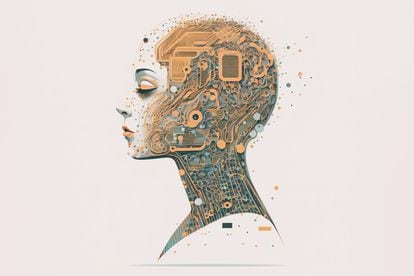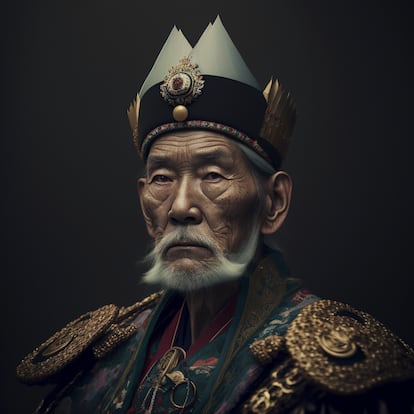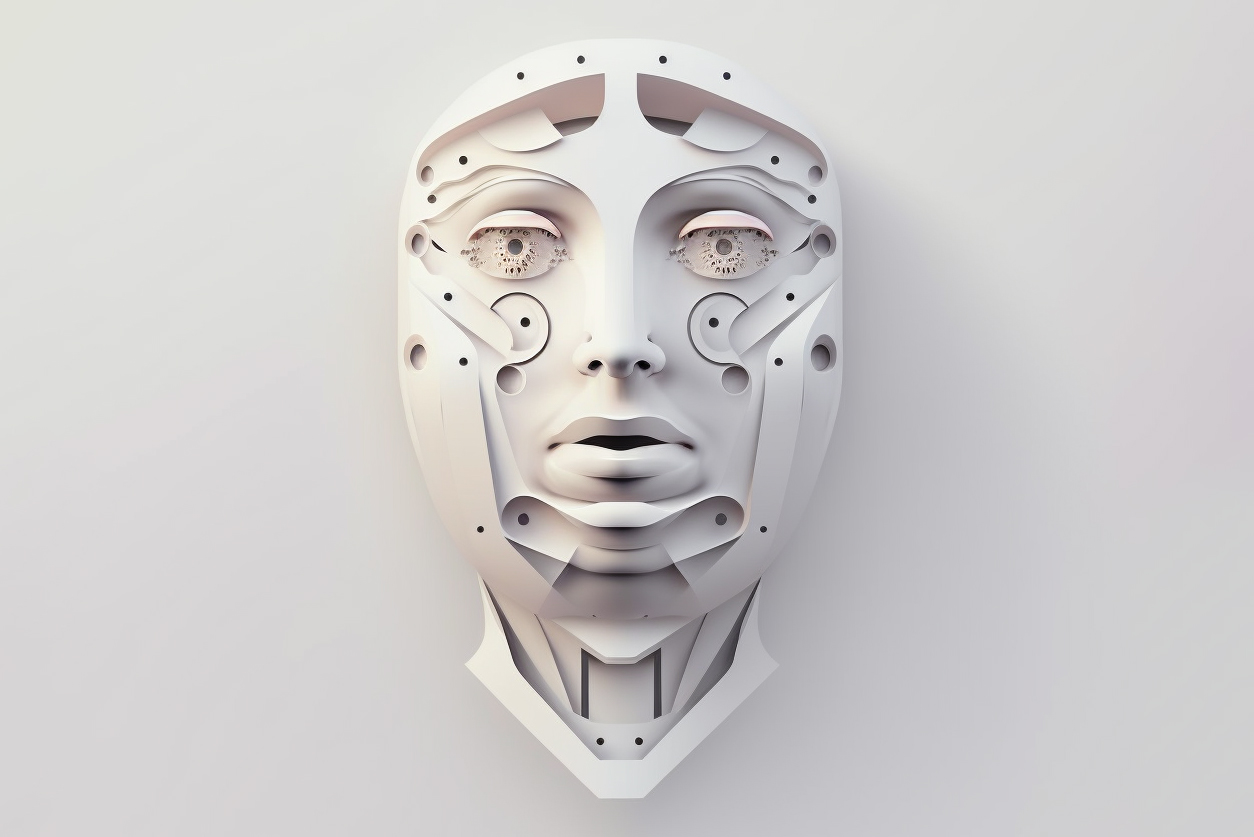ChatGPT is just the beginning: Artificial intelligence is ready to transform the world
New chatbots capable of generating text and images from a few, simple prompts provide glimpses of how AI could change the workplace, education, superpower relations and our daily lives

If you ask the ChatGPT artificial intelligence (AI) system a question about its own leading role in a technological revolution, the first part of its answer is fairly unimpressive: “It’s underway and expected to have a significant impact on many sectors.” But then ChatGPT goes on to say, “Its potential is enormous, but also raises ethical concerns.” That’s the feeling shared by most tech experts.
Mary Shelley wrote Frankenstein more than 200 years ago, and humanity has been striving for decades to develop real-life artificial intelligence. But the launch of ChatGPT two months ago marks the first time an artificial intelligence system touched ordinary lives due to its ability to understand and respond to prompts written in ordinary sentences – natural language.
ChatGPT is still in its infancy and buggy – they call it a “research release” – but its enormous potential is astonishing. ChatGPT is just the first wave of a larger AI tsunami, with capabilities unimaginable just 10 years ago. Satya Nadella, Microsoft’s chairman and CEO, said at the World Economic Forum’s Annual Meeting in Davos on January 18 that we are witnessing “the emergence of a whole new set of technologies that will be revolutionary.” Five days later, his company announced a second billion-dollar investment in OpenAI, the creator of ChatGPT. The revolution Nadella envisions could affect almost every aspect of life and provide extraordinary benefits, along with some significant risks. It will transform how we work, how we learn, how nations interact, and how we define art. “AI will transform the world,” concluded a 2021 report by the US National Security Commission on Artificial Intelligence.
What does this new technology do?
The first rumblings of the revolution began just a few months ago with the widespread release of powerful AI systems trained on massive amounts of data that are capable of generating accurate, coherent text and spectacular images. To better understand and explain its potential, we conducted a few tests of ChatGPT. Using this system is different than doing a Google search because of the fluency of the response. When asked, “Who is Barack Obama?” ChatGPT replies:
But it can also conduct a conversation, and comprehends our instruction to provide an answer with emoticons and in language a 10-year-old can understand.
It is easy to imagine how useful this can be – what if Alexa or Siri were smarter? Or if you could talk to your laptop? We could ask Microsoft Word to summarize this article using a voice command. Or we could tell a web page, “I can’t read this – make the font larger.” ChatGPT is already capable of answering difficult questions. For example, a couple going through a divorce might ask for advice on how to tell their young daughter.
It’s not hard to envision the strange future ahead. For example, an elderly person seeking help could ask, “I’m 80 years old and I don’t understand Instagram, can you explain it to me?”
ChatGPT has some obvious flaws and it’s not a finished product, as co-creator Sam Altman readily admitted on Twitter: “It’s incredibly limited, but good enough at some things to give a misleading impression of greatness... It does know a lot, but the danger is that it is confident and wrong a significant fraction of the time.” Altman acknowledged the same serious limitation noted by other experts – ChatGPT hallucinates, makes up answers and fails to distinguish between what is real and what only appears to be real. Still, this is just the beginning. Microsoft’s Nadella noted at the Davos meeting that the program is moving forward very quickly with “non-linear evolution,” and demonstrates “an emerging capability.”
New ChatGPT releases (GPT-4) and potential rivals are expected in the coming months. Google’s DeepMind has a chatbot called Sparrow that might be unveiled soon. DeepMind was bought by Google in 2014 and has had several impressive AI successes in recent years. In 2015, it demonstrated the first AI system capable of beating a professional Go player. Last year, DeepMind’s AlphaFold tool achieved AI’s greatest scientific achievement to date by predicting the structure of almost every protein known to science, some of which are essential to understanding devastating diseases like Alzheimer’s and Parkinson’s.
The AI investments by Microsoft and Google are not spontaneous or one-off decisions, but the latest steps in a decade-long journey. Around 2010, neural network technology finally achieved some significant breakthroughs, and private investment in this field rose from $10 billion to $160 billion between 2013 and 2021.
The technology is backed by some serious scientific credentials. Three pioneers in the AI field – Yoshua Bengio, Geoffrey Hinton and Yann LeCun – won the Turing Award Prize in 2019, the top prize in computer science. In 2021, the same scientists and Demis Hassabis received Spain’s Princess of Asturias award to individuals, entities or organizations who make notable achievements in the sciences, humanities, and public affairs. The AI systems emerging today are the tangible products of their ideas and theories.
A flood of new AI-enabled tools is anticipated. Many programmers already use Copilot, a virtual assistant that writes programming code based on natural-language instructions. Notion, a popular productivity and note-taking web application, now has the ability to summarize text, translate it to other languages, and suggest ideas.
There are also AI tools for creating images. We instructed one such tool, Midjourney, to “Draw a little boy in a red coat, standing with his back to the camera, looking at a large, streaming screen with a futuristic abstract frame, created with a digital charcoal brush and inspired by another image uploaded by Fran Pulido, our illustrator.”

That was just one example – these tools will draw whatever you ask them to draw. In fact, users need to be always mindful of protecting their own images and intellectual property rights. These image-generating applications accept user commands and then generate the corresponding images. The interactive demonstration below shows how you can use three image-generating tools to instantly produce illustrations by choosing a subject, location and style.
These AI tools gain their capabilities by “learning” from large amounts of data. For example, DALL-E was trained on pairs of images and their descriptions. It iteratively ordered billions of parameters in an optimal configuration to win a simple game – look at an image and a list of possible descriptions, and then identify the correct description.
In 2023, new advances in AI-enabled video and audio are also anticipated. “AI is on the cusp of being integrated into the voice assistants we have at home and on our mobile devices,” said Carmen Torrijos, head of AI at Prodigioso Volcán. “The gap between the conversational intelligence of ChatGPT and the frequent mistakes and failures of Alexa and Siri is no longer sustainable because people have already tried better technology… In the last five years, [Alexa and Siri] should have become something closer to a personal assistant, with more knowledge about the world and the user’s circumstances, with intelligent data exchange, proactivity and a natural feel.”
Javier López, a cofounder of Erasmusu and an investor in startups, has spent months understanding this technology and says it’s different than other tech trends like cryptocurrency and the metaverse. “AI doesn’t have to promise anything – it already provides powerful tools of all kinds. It can generate any image you can think of or create a complete story from a short synopsis. And that’s just the generative AI that emerged in 2022. AI is already having an impact on all fields of human knowledge: science, medicine, engineering, mathematics, physics and more.”
What kind of impact will it have?
Artificial intelligence has enormous potential, but it will bring with it all the turmoil inherent in transformative technologies and promises to disrupt our highly digitized lives. It will trigger competition in business and technology, and may upend geopolitical balances. AI many even reshape our concept of creativity. The European Union is one of the first global powers to begin developing legislation on the subject, and hopes to define the types of AI applications that present unacceptable risks. Objectionable AI applications include ones like China’s system that ranks its citizens based on their “social credit.” Others could include resume scanning systems that can lead to discrimination. Release of high-risk AI applications would require special authorization, while others would be subject to a liberal regulatory framework.
AI impacts on everyday life: a new human-machine interface
Algorithms have been proliferating rapidly for years, even if we don’t see them. Netflix uses them to recommend programs and movies you may like. Electricity companies use them to predict energy demand, and Ikea uses them to forecast product demand and optimize its fleet of delivery vehicles. But the new artificial intelligence systems will be more visible in everyday life.
A major innovation of generative AI is that it can understand natural language and doesn’t depend on a set of special commands. It has a deeper understanding of the words entered by users than the typical search engines and other systems of the past. Generative AI systems have been trained to understand and connect concepts like cheerful, ostrich, trap, or nineteenth century. They know what it means to summarize or explain, and can even perform a form of reasoning. They can respond by generating programming code or words. This is a monumental change. “It can become our main interface for interacting with machines,” said Jean-Noël Barrot, France’s Minister for Digital Transition and Telecommunications at the Davos meeting.
Perhaps the future lies in asking the computer what we want, like telling an ecommerce store that we’re looking for a blue suit, but not that one – a suit for summer. Or we want a suit like the one that actor wore – what’s his name? – he was in that movie about robbing casinos. In the future, when you read this article in the EL PAÍS app, you might be able to ask the app to read it out loud. Or you can ask it to clarify something in the article, like “What’s Davos?”
Artificial intelligence also has the potential to help us create. We’ll speak to Google Docs and tell it to make headings big and bold, or ask Excel to add a column with the population figures for each municipality. Or tell Photoshop to give everyone in the photo friendlier expressions.
“These artificial intelligence applications show that they know how to anticipate a user’s intentions, which are often expressed in different terms and can be very vague,” said Victoriano Izquierdo, the CEO of Graphext, an application for analyzing data that doesn’t require users to learn special commands. “An application with a conversational back-and-forth style to specify requirements and clarify questions greatly improves the user experience.”

AI impacts on business and the workplace
The race is on. Not only are huge investments flowing into AI system development, but businesses in various industries are readying to incorporate AI into their operating mechanisms. In a recent interview with EL PAÍS, Jean-Marc Ollagnier, head of Accenture Europe, said that he believes the business world will undergo a revolution over the next 10 years that will be more dramatic than anything experienced since 1945, and AI will be a major driver of this transformation.
AI applications will extend capabilities and improve productivity to such an extent that the labor market will be heavily affected. New jobs will be created, others will be transformed, and some will become redundant and disappear. For the first time in human history, creative tasks could be automated. Jobs that involve solving complex problems, writing, advising, summarizing or providing examples will be impacted. Skilled positions may experience heavier impacts from AI than previous technological innovations. “We’ve gotten used to the idea that technological advances lead to the loss of blue-collar jobs, but now the prospect that white-collar jobs could be lost is quite disturbing,” Nicole Sahin, CEO of G-P (a global recruiting and hiring platform) at the Davos meeting.
“It’s possible that instead of needing five software engineers to write code, it will only take one really good engineer to review what an AI tool produces,” Sahin said. Other workplaces could experience similar changes. When BuzzFeed’s CEO told the news and entertainment company’s staff this week that he intends to use OpenAI, the creator of ChatGPT, to develop content, the company’s stock soared on the news. One can envision using AI tools in law firms to help master the large volume of legislation, court rulings and the legal canon. The list goes on and on. “The impacts are quite unpredictable. But what’s clear is that everything is accelerating at the speed of light,” said Sahin.
“It certainly has important implications for the workplace,” said Barrot. “But I’m not in the pessimist’s camp. I think these technologies, once they gain momentum, will enable people to focus on other tasks.” If college professors can use a virtual assistant to send emails or develop a bibliography, perhaps they will have more time to research, design experiments, or simply think.
Priya Lakhani, the founder and head of AI-powered learning platform Century Tech, said, “On a scale of 1 to 10, the risk is minimal for anyone with an attitude and job that encourages constant learning. On the other hand, the risk is very high for anyone in a country or organization that doesn’t care about how this technology could be disruptive. AI innovations could expand the digital divide even more.”
Just like in the first stage of the digital revolution, AI has the potential for creating new businesses and jobs. The field of digital video today employs many more people than in the era of analog video – five minutes browsing YouTube will tell you that. But even when the net gain is positive, many people could still lose their jobs in the transition. Retraining and supporting those who are struggling with the change will be crucial in determining the net effect.

AI impacts on education
Like other fields, the anticipated AI impacts on education are both encouraging and problematic. Free access to ChatGPT has sparked concern about students using it for their homework or exams. Cheating has many negative effects, like preventing the accurate assessment of educational achievement, skewing competitions for merit scholarships, and more.
Cheating aside, AI systems could detract from using the basic mental processes needed to develop the intellect, such as the refinement of thinking skills through writing exercises. What skills could be lost if they are not used? According to Carmen Torrijos, the loss of cognitive skills due to the emergence of an artificial process is nothing new. “We are still taught in school how to add, subtract and multiply, even though calculators have been around for many years. We start using them at a certain age and gradually lose the ability to do mental arithmetic, but never to a level that makes life difficult.”
Despite some pitfalls, AI offers enormous educational potential for learning programs. They will be able to support teachers by relieving them of tasks that don’t add value, and help students on their individual educational journeys. Private tutoring creates a degree of social inequality because wealthy families spend up to five times more on this service. AI can narrow this gap if used to create adaptive tutorials and books suitable for self-study, or to develop virtual tutors that can answer a student’s questions.
In Davos, Century Tech’s Lakhani felt that the time is right to push for change in education systems. “Some educators see this as an empowering and enabling force, but others are skeptical and afraid of the repercussions. I think there is a need for collaborative thinking by education professionals and legislators to move the system away from memorization-based models and more towards building critical minds,” she said.
One limitation of ChatGPT is that it often provides responses with inaccurate information or that are difficult to verify. Other AI tools face the same challenge. But in the example below, Perplexity is able to answer a question in natural language and provide links to its sources of information.
AI impacts on geopolitics
There is every indication that AI will play a prominent role in how countries will be able to conduct themselves on the international stage. This technology “will be a source of enormous power for the companies and countries that harness it,” stated the report by the US National Security Commission on Artificial Intelligence.
One of the main reasons is that control of AI technologies will generate wealth. In Davos, Nadella pointed out that a new generation of AI platforms with enormous business potential is emerging in transversal services like the major search engines, social networks and digital clouds. The wealth generated by businesses that know how to make the most of these technologies will have a cascading effect.
But AI will also establish the balance of power in other areas as well. It will be a significant factor in the evolution of military forces. The prospect of autonomous robot soldiers fighting wars is still a long way off, and no one is currently considering handing over nuclear launch capabilities to an AI system. But the world’s major military forces have been studying how to incorporate this technology for some time.
AI will not only tip the scales in wealth accumulation and military capabilities, but it can also increase the risk of hybrid attacks, disruptions, and other harmful activity. Disinformation campaigns, cyberattacks, data collection, facial recognition and the like are already a significant problem, and may develop even more sophisticated capabilities that can disrupt democracies and consolidate internal control in authoritarian regimes.
It’s a tight race right now. “China has the power, talent, and ambition to overtake the United States as the world leader in AI in the next decade if current dynamics don’t change,” warned the report by the US National Security Commission on Artificial Intelligence. The US restrictions on technology exports to China should be viewed as measures to thwart the Asian giant’s progress in strategic sectors such as AI. For the moment, the EU seems to be lagging behind in the AI and digital races.

The bottom line
The report by the US National Security Commission on Artificial Intelligence says that there is no historical reference to gauge the impact of AI. However, it suggests that we are looking at more than a major technological breakthrough. It’s a large-scale transformation like the one Thomas Edison described when talking about the electricity revolution: “It is the field of fields… it holds the secrets which will reorganize the life of the world.”
Some view this potential transformation with great optimism; others view the potential risks with trepidation. Elon Musk has repeatedly expressed his belief that robots will eventually be able to do any job better than humans. This could mean a huge breakthrough in productivity – fulfilling the dream of a world without work – and also enormous disruption. It would require, says Musk, universal guaranteed income systems. It would also require a new sense of purpose.
Giving commands instead of illustrating: “A daunting challenge”

The assignment: create five images to illustrate this article using Midjourney’s artificial intelligence system. Illustrator Fran Pulido accepted the assignment. “It was a daunting challenge,” he said. It took him about 20 hours and more than 100 tries to fine-tune the illustrations generated by the machine. “There were a few frustrating moments when I thought I was going to miss the deadline,” he said. “I started thinking it would take less time just to create the illustrations myself.” Still, he was fascinated by the tool. “It’s a little rough still, but full of potential to help us with our most tedious tasks.”

